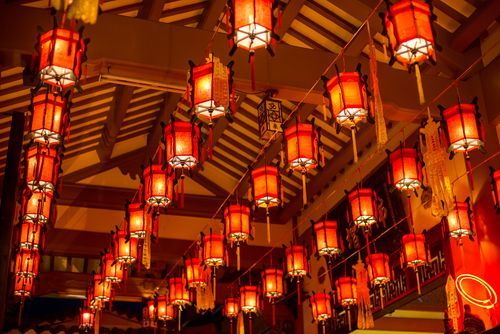
Theravada Buddhism focuses on the core teachings of the four noble truths and other foundational Buddhist texts. Otherwise known as "the way of the elders," this sect of Buddhism is prevalent in Southeast Asian countries such as Sri Lanka, Thailand, Cambodia, Laos and Myanmar.
Every year, followers of this tradition celebrate Theravada New Year to commemorate the Buddha's life from birth to enlightenment and death. It also marks the beginning of the rainy season in the countries where it is most frequently observed. The festivities start after the first full moon in April and last three days.
Water Festival
Water is an important element in Theravada Buddhism. It is used to signify the washing away of wrongdoing or other evils to make the path to enlightenment clearer. Water is often used in purification rituals, and those who come to celebrate the new year may visit the temple to observe or participate in them. It may be poured over their hands or the statue of the Buddha as part of the ceremony.
Sandcastles
Another common practice during Theravada is building sandcastles or other structures along riverbanks. In addition to being a fun way for everyone from the young to the old to participate, it holds significant meaning for the new year.
Every grain of sand used represents mistakes or other obstacles to dharmic purity. While building the structure, participants are encouraged to reflect on their choices in the past year and imagine how they can right any wrongs they have committed or at least avoid causing the same hurt in the future. Then they envision a new beginning when the water of the river washes the sandcastle, and the harm its components represent away.
Almsgiving
Reciprocity between Theravadin monks and the lay community is an important part of their communal structure. In fact, the laity often provides for the needs of the monks in their area so that those who have completely committed their lives to the practice of Theravada Buddhism can do so without being encumbered by concerns for food, shelter or other material needs. Therefore, many may not consider any celebration complete that does not honor this relationship through almsgiving. This may be done at the temple or through the specific local customs of the area where the festivities take place.
Kindness
Practicing kindness to all living creatures is a fundamental part of Buddhist living. It logically follows that it would be essential in any festival or celebration, particularly one that specifically honors the life of the Buddha. There are many ways to be kind, but the five precepts serve as a guide for how to approach life by abstaining from certain evils:
- Killing any living being
- Taking anything that is not freely given
- Engaging in sexual misconduct
- Participating in wrong speech, such as lying, slander or rude language
- Using intoxicating substances
Because the treatment of others extends to all living beings for those who practice Theravada Buddhism, a life or mercy release of animals held in captivity may be a part of the celebration. Those who wish to incorporate this practice must be careful to ensure that their actions not only carry the intention of kindness but also result in actual freedom and life for the animals involved. For example, setting caged animals loose into an ecosystem that does not support them may ultimately cause more harm than good. A true mercy release must be life-giving, not only in planning but in impact.
The three days of the Theravada New Year are a time of renewal for those who observe it. They reflect on how their choices align with the five precepts and, when needed, commit to adjusting their behavior going forward. In this way, they honor the life and example of the Buddha and prepare their hearts and minds for the upcoming year.